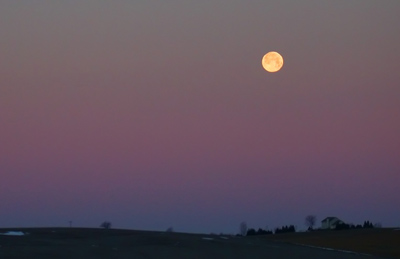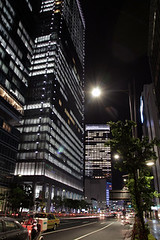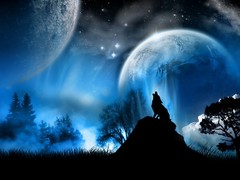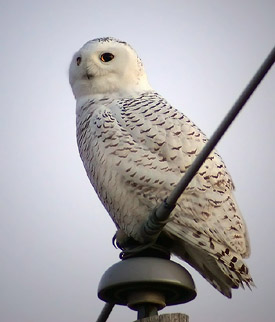(click on image for larger version)
Though the Middleton Snowy Owl made a spectacular exodus Saturday evening flying southeast over Lake Mendota, owl seekers continue to gather at the intersection of Pheasant Branch Road and Fisher Road in hopes of getting a glimpse of it. But as I suspected, Sunday morning the owl was not to be seen at any of its three usual roosting locations, nor has it returned in the evenings since its departure.
For whatever reason, the owl seemed spooked by a bicyclist (as observed on a few other occasions as well) and retreated atop a silo where it remained until dusk. As its regular hunting time approached, instead of coming down to hunt along Pheasant Branch Road, it ascended skyward and made a beeline out of the area. I watched it through my scope until the bird was out of view.
Perhaps we'll never know the true reason the owl abandoned the fields it had been using for the past two weeks, but it wasn't for lack of available food. Though I encouraged people to watch from the top of the hill at Fisher Road, getting a better look for some meant parking along Pheasant Branch Road where the owl would perch on utility poles to scan the farm fields. This often meant starting up and repositioning cars as the bird moved - a practice I wasn’t particularly fond of. I was informed by a birder that a Snowy Owl at Bong State Recreation Area had been harassed to the point that the state naturalist there solved the problem by having the rangers ticket anyone getting too close to the bird.
Sometimes from Fisher Road, or scoping from over a half mile away, I took lots of notes while observing the owl. While there were a few exceptions, over the past two weeks the owl's daily routine was predictably consistent. A bird I could practically set my watch to, its schedule correlated more so to the light level than it did to exact times, so on clear days it would roost a little earlier and hunt later:
7:00 a.m. - final morning hunting.
7:30 a.m. - often preened, then went to the ground to roost.
1:00 p.m. - occasional mid-day hunting, but would return to roost.
3:30 p.m. - left roost, went to utility poles/fence posts.
5:00 p.m. - evening hunting.
I watched it capture and consume rats, mice (voles?) and small birds (probably house sparrows) - it experienced no problem finding meals. As mentioned in a previous post, one time it attempted a strike at a small flock of rock pigeons but missed. The hovering kestrel-like behavior was new to me - I didn't know owls employed this technique.
Another fun observation was watching it select a roosting spot. It would walk around on the ground and "test feel" a patch of tall grass and nestle into it. Sometimes, apparently not content with comfort, it would walk over to another spot and repeat this until ducking down low...and then it slumbered. The coolest observation was a few nights ago - I awoke during the middle of the night and decided to drive out there. The bright moonlight revealed the snowy soaring over the fields happily hunting the night away.

For the most part, I think the owl fared pretty well...even with all the spectators. This experience was very rewarding and many people, including some kids, got to see their very first Snowy Owl. However, during the past two weeks I was reminded through reports from other birders as well as the local farmers, and also from my own observations, there are a few people who cannot be trusted around these birds. In particular, I'm speaking of the photographers who trespassed on private property to approach the Snowy Owl while it was roosting.
Snowy Owl image © 2006 Mike McDowell


















